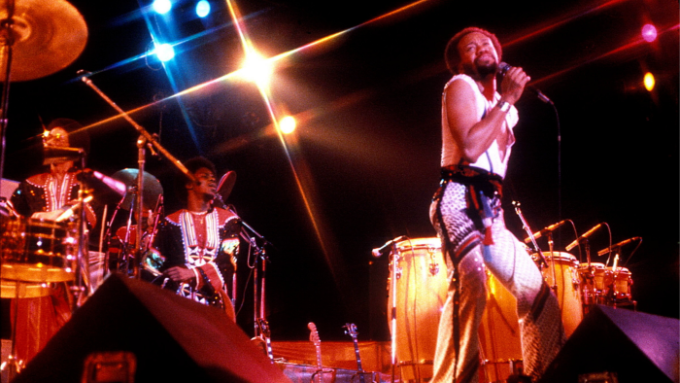Going Back to My Roots — when Lamont Dozier came out of the doldrums

Simply sign up to the Life & Arts myFT Digest -- delivered directly to your inbox.
In 1977 Lamont Dozier was in a recording studio in Hollywood with producer Stewart Levine and, co-producing, South African-born horn-player Hugh Masekela. Nearly 10 years had passed since Dozier and the Holland brothers, Eddie and Brian, had parted company from Berry Gordy’s Motown label after writing a torrent of pop classics (“Baby Love” and “Reach Out I’ll Be There” among them). After a handful of hits on their new label, the three went their separate ways and in the early 1970s, Dozier struck out on his own.
He’d had some success with 1974’s “Trying to Hold On to My Woman” but by 1977 he was, by his standards, in the doldrums. During the sessions for what was to become his Peddlin’ Music on the Side album, Dozier brought in “Going Back to My Roots”. It turned out to be a triumph.
The opening of “Going Back to My Roots” is a masterclass in how to build musical tension. It begins with a thrilling contrapuntal piano riff; then comes bass drum, a spiky guitar lick, string-synths, percussion, layer upon layer. An urgent backing vocal — “Ah-hah” — raises the stakes, its harmonies signifying what the guitar lick has intimated: African-ness. It’s a minute-and-a-half before Dozier’s voice is heard. “Zippin’ up my boots,” he finally sings. “Going back to my roots/ To the place of my birth/ Back down to earth.”
The song was released in the early days of the 12-inch single, and the full version exploits the new format to the max, lasting for nearly 10 minutes, its final section spiralling off into Afrobeat and Yoruba chanting.
But what inspired Dozier to write the song? Almost every available source — web pages, blogs, reviews — now states with certainty that it was sparked by the phenomenally successful 1977 TV mini-series Roots. Based on the bestselling Alex Haley novel of the same name, the series depicts a modern-day African-American tracing his ancestry back, via the slave trade, to a village in Gambia (a remake is scheduled to air next year).

And yet, in an interview with Blues & Soul magazine in 1977, Dozier stated otherwise: “The song was inspired by the fact that I have my ‘roots’ in Detroit and when I moved to Los Angeles, a few years ago, I found myself taking trips to Detroit to see my family and so on,” he said.
Nevertheless, the song chimed with the Roots-y zeitgeist, propelling Dozier back into the spotlight — and on to the dance floor. It was covered several times. Woodstock veteran Richie Havens’ 1980 rendition is, if anything, even funkier, the rhythms tighter and sharper. The melody suits Havens’ dry, dusty voice perfectly. At the end, he adds his own Woodstockian touch: “It’s not black, it’s not white, it’s not red, it’s not yellow.” The following year the US band Odyssey gave it a disco makeover, and it’s this version that’s most widely known.

However, in recent years the song’s own roots have been called into question (similarly, the historical accuracy of Haley’s novel was challenged). In a video circulated online by dance and Afrobeat label Strut Records, veteran Nigerian saxophonist Orlando Julius explains how he came to be involved in the recording of “Going Back to My Roots”, having previously worked with Masekela; indeed he is credited for “African vocal arrangement”. But Julius also claims the song’s guitar part is taken from his own earlier composition “Ashiko”.
Well, he has a point. There are various recordings of the song by Julius, as well as several versions by Masekela, some predating “Going Back to My Roots”. In some, the resemblance is not obvious, but in most of them that distinctive guitar lick is there. Julius, however, now seems phlegmatic: “That’s life,” he says.
For more columns and podcasts with clips, visit ft.com/life-of-a-song
Listen to the podcast
Photographs: Photoshot; ABC via Getty Images

Comments